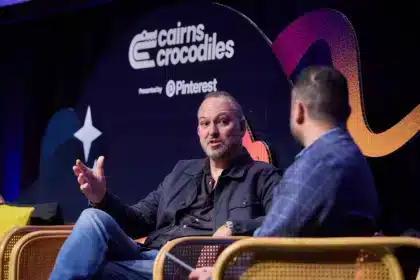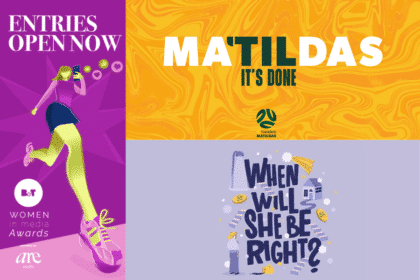In the race to stay relevant to consumers and emerge from the clutter, open brands will outperform their markets in 2015, says François Pétavy, CEO of crowdsourcing brand platform eYeka.
How can brands innovate fast enough in a world where consumer behaviours are shifting overnight? How does advertising stay relevant with a globally connected yet multicultural and hyper-fragmented audience? And how will companies cut through the clutter to reach consumers online, fighting for share of attention against content from their competitors, but foremost content generated by friends, families or influencers on social media? These are the questions on the mind of François Pétavy, CEO of creative crowdsourcing platform eYeka.
In the last few years, ‘open creativity’ – organisations sourcing creative ideas and innovative technologies from outside of their own corporate walls – has become a prevalent trend. The world’s biggest brands have been increasingly asking consumers to generate ideas and to produce content for them, mostly through crowdsourcing.Through a massively parallel creative process engaging hundreds and sometimes thousands of fresh and self-motivated minds, crowdsourcing enables the surfacing of fresh and sometimes disruptive ideas at unprecedented speed. Its effectiveness is not to be proven anymore, and it is no surprise the biggest FMCG brands increased their investments in crowdsourcing by almost 50% in 2014.
With that in mind, here are the five creativity trends I see unfolding in 2015.
1. The rise of the open enterprise
“Opening up” – under forms such as co-creation with consumers, crowdsourcing or open innovation – is now a boardroom topic, and one of the most frequent top five priorities among Global 1000 companies. The traditional firm / employees / suppliers / customers model is exploding towards a more open and collaborative approach where the boundaries are blurred.
According to McKinsey, 90% of executives are eager to get consumers involved in co-creation. Even Gartner predicts that by 2017, more than half of consumer goods manufacturers will source 75 % of their consumer innovation from crowdsourced solutions. A good example of this is Unilever with The Unilever Foundry as an incubator and hub to tap into innovative technology start-ups, in addition to involving its own employees and suppliers. My bet is that we will see more and more corporate endeavours in 2015 such as this. After all, no one is smarter than everyone.
2. Crowdsourcing will become the new normal
A few years ago, when I was speaking about crowdsourcing, I was often getting a “crowd-what?” look. Crowdsourcing initiatives were then financed from the 10% of marketing budget earmarked for experimentation and learning, or as a one-off PR stunt. The early experiments have paid off. We’re now seeing a “consumerisation” of enterprises as the new generations of marketers, who use Uber, AirBnB and Zipcar in their everyday lives, are comfortable with collaborative approaches.
The “Why don’t we crowdsource it?” question is now coming simultaneously from digital managers, brand directors, innovation teams, marketing leadership, and procurement departments. As a result we are seeing a strong acceleration of the internal adoption of these tools within those same companies who were in pilot mode three years ago. In 2015, we will see crowdsourcing become structurally embedded into the big brands’ marketing processes. And there will be a dedicated line item for it in marketers’ budget.
3. Collective intelligence will trump content creation
Crowdsourcing made a name for itself with competitions like the Doritos Crash The Super Bowl video contest. While such video content creation will continue to grow, I see more and more brands realising that the strategic value of crowdsourcing also lies in what crowds do best: providing collective intelligence. Consistently, when crowdsourcing ideas for product development or to convey the idea of a brand, we see compelling trends and consistent routes emerging from the abundance of content delivered by participants.
In that spirit, when launching a crowdsourcing project aimed at exploring new dimensions of taste in China, Coca-Cola recently stated: “Don’t make an ad for Coke – we’re interested in your creative point of view”. We see companies such as Unilever leveraging the crowd not as a substitute of traditional approaches, but as a catalyst of their creative ecosystem – getting fresh, intelligently naïve ideas and combining these with robust strategy and execution.
4. Open companies will outperform others
Creativity and innovation truly matter – an August 2014 survey from Forrester outlined that 82% of companies believe that there is a strong connection between creativity and business results. Yet only 37% of companies see themselves as creative, and opening up is an efficient solution to fill that gap. Beyond the overall vision of co-creating value with consumers, companies have a truly pragmatic urge to find the right solution for the right audience faster than their competitors, which is what crowdsourcing enables.
Gartner predicts that consumer goods companies that employ crowdsourcing in marketing campaigns or new product development will boost their revenue by 1% compared to “non-crowdsourced competitors” as early as 2015. And my bet is that, beyond companies winning awards for crowdsourced advertising campaigns or products, we will see a “crowdsourcing dividend” paying off in 2015.
5. Taking part in crowdsourcing projects becomes a popular hobby
The collaborative economy is accelerating and most of us have now used at least one collaborative service. A recent study from TNS Emnid showed that 69% of Europeans consider themselves creative, and we know this from our own creative survey. Carried out with 1,989 respondents in the US, UK and France, it revealed that about 20% of the general population is interested in co-creating with brands. In 2015, taking part in crowdsourcing projects will become increasingly popular as a means for people to express their creativity and influence the creation and marketing of new products from their preferred brands.








